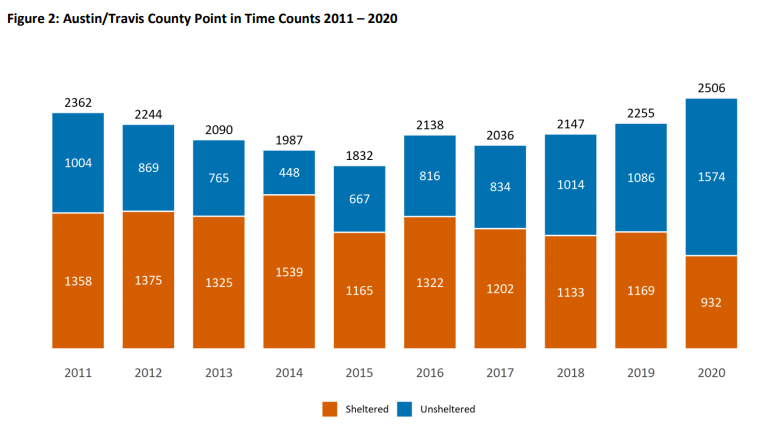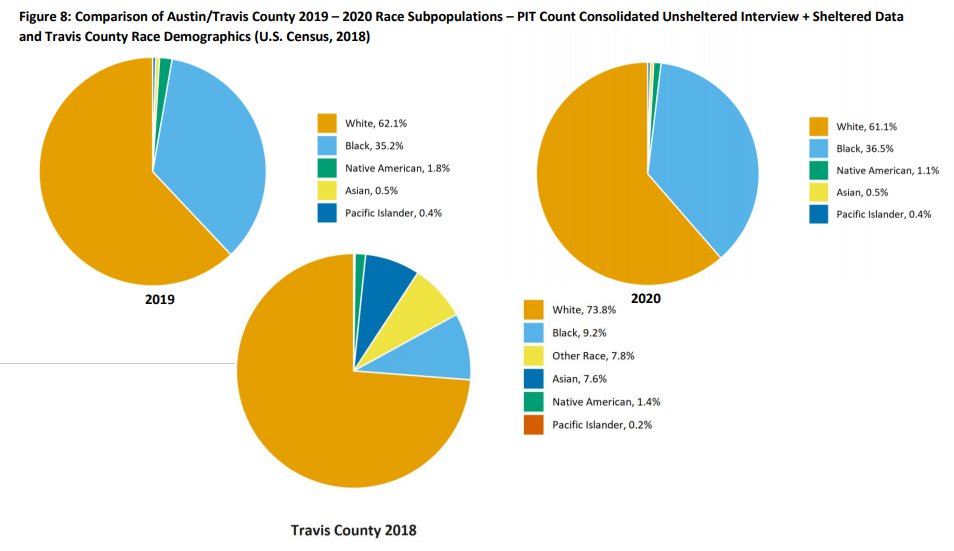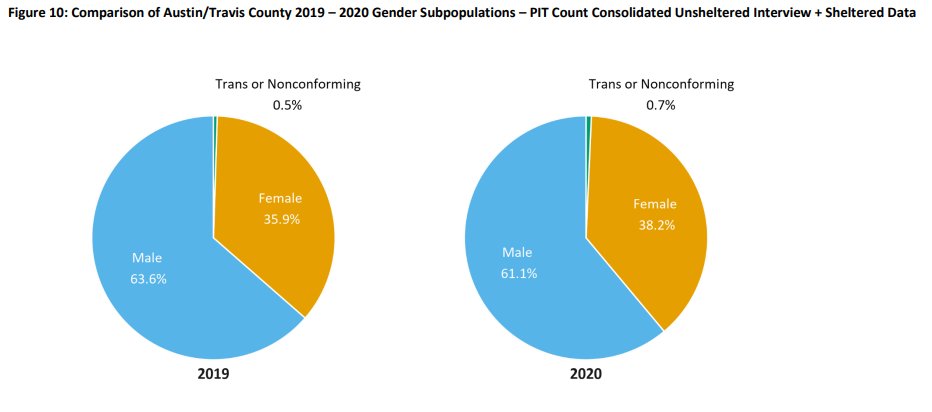For context, this comes after the 2019 decisions by city council to rescind its camping/lying ban in July, then reinstated some restrictions in October. #ATX
thetexan.news/austin-city-co…
Additionally, there was a 45% increase in 𝑢𝑛𝑠ℎ𝑒𝑙𝑡𝑒𝑟𝑒𝑑 homeless individuals and a 20% decrease in the 𝑠ℎ𝑒𝑙𝑡𝑒𝑟𝑒𝑑 count. #ATX


Meanwhile, the sheltered population has almost continuously declined since 2016. #ATX

The 2nd graphic is mine comparing homeless pop. as a % of total population & the homeless pop. increase as a share of year-to-year population increase. #ATX


The other tables show unsheltered homeless population by council district and municipality. #ATX





Due to the convoluted methods of data collection on race/ethnicity, it's difficult to compare the report w/ population percentages, but the latest Census estimates follow for reference. #ATX





But as a % of 𝑒𝑥𝑖𝑠𝑡𝑖𝑛𝑔 homeless, most are from #ATX, at least so far as this report classifies it.

But in its analysis, it compares a 𝑚𝑒𝑑𝑖𝑎𝑛 rent w/ a 𝑚𝑖𝑛𝑖𝑚𝑢𝑚 wage. A median wage in #ATX is $55,216 and the listed median rent would make up 27% of it.

The report states that minimum-tier properties increased 6.2% and middle-tier properties increased 4.8% in cost.
Austin is a costly city, and that cost certainly poses a problem.
austinecho.org/about-echo/hom…
Since the city's changes in its camping/lying policies, #ATX has seen an increase in the raw number of homeless, but the proportion of homeless to total population is not an outlier of the recent trend, though.
Correlation doesn't necessarily equal causation, but an incentive to leave shelters and live on the street was prominent.



